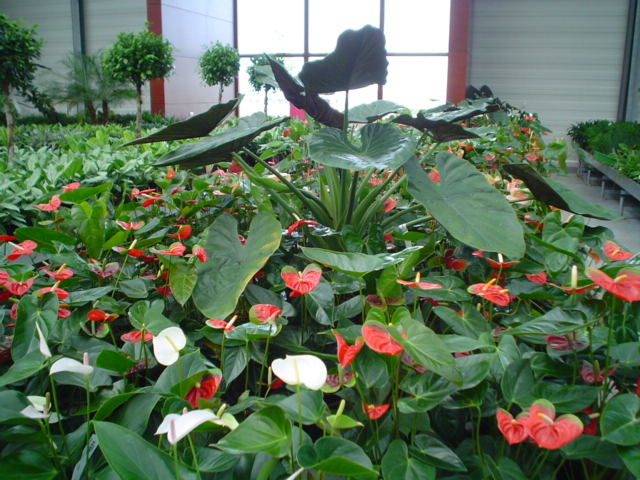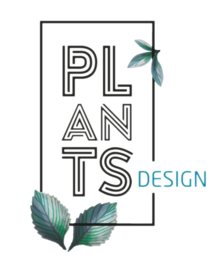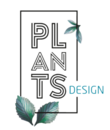Introduction
Sustainability has become the cornerstone of modern interior architecture, reshaping the way we design and interact with our living spaces. As we increasingly focus on environmentally responsible practices, it’s no wonder that architects and designers are seeking innovative solutions to create greener, more sustainable interiors.
One such marvel is the integration of hydroculture planting systems, a soil-less cultivation method that not only transforms interior spaces but also reduces our carbon footprint. In this comprehensive guide, we’ll explore the world of sustainability in modern and future interior architecture, with a special focus on hydroculture plants as a sustainable design element.
Sustainability in Interior Architecture
Sustainability is no longer a buzzword; it’s a guiding principle in the world of interior architecture. As architects and designers adapt to the changing landscape of design and construction, they are keenly aware of their role in addressing global environmental concerns.
Here are some key ways in which sustainability is shaping modern and future interior architecture:
1. Green Building Materials
The choice of materials plays a pivotal role in sustainable interior architecture. Eco-friendly materials, such as reclaimed wood, recycled glass, and sustainable fabrics, are increasingly used to reduce the carbon footprint of projects. The use of green materials not only lowers the environmental impact but also enhances the aesthetic appeal of interiors.
2. Energy Efficiency
Architects are designing interiors with energy efficiency in mind. This involves optimizing natural lighting, using energy-efficient lighting fixtures, and installing smart climate control systems to reduce energy consumption. Sustainable lighting designs not only save energy but also create visually appealing spaces.
3. Space Utilization
Effective space utilization is another aspect of sustainability. In modern interior architecture, versatile and multifunctional spaces are designed to maximize utility and minimize the need for additional construction. This approach reduces waste, energy, and resources.
4. Indoor Air Quality
Indoor air quality is crucial for occupant well-being. Sustainable interior architecture prioritizes natural ventilation and incorporates air-purifying elements, such as indoor plants, to create healthier living environments.
Hydroculture plants are a prime example of how to achieve this goal.
Hydroculture: The Future of Sustainable Interior Architecture
Imagine a world where you can grow beautiful and healthy plants indoors, without using any soil, and with minimal water and maintenance. Sounds too good to be true, right? Well, this is not a fantasy, but a reality, thanks to hydroculture.

Hydroculture is a revolutionary method of growing plants in a soil-less medium, such as clay pebbles, and in water. Unlike hydroponics, which uses a liquid nutrient solution, hydroculture plants get their nutrients from the water or the medium itself, which is easy to maintain. Hydroculture plants have smaller root systems and are more resistant to pests and diseases than soil-grown plants. You can use hydroculture plants to decorate your indoor space and enjoy their aesthetic and environmental benefits.
Hydroculture is not a new concept, but it has gained immense popularity in interior architecture in over 40 years for its sustainability and aesthetic advantages. Hydroculture systems are ideal for creating greener, healthier, and more beautiful interior spaces, with less water, energy, and resources.
In this comprehensive guide, we’ll explore the world of sustainability in modern and future interior architecture, with a special focus on hydroculture plants as a sustainable design element.
Hydroculture and Sustainability
Hydroculture and sustainability go hand in hand, offering a myriad of environmental benefits. Hydroculture is a soil-less cultivation method that uses an inert growing medium, such as clay pebbles, and a nutrient solution to grow plants.
1. Reduced Water Consumption
At a time where water conservation is paramount, hydroculture plants stand out as water-efficient options. Hydroculture uses up to 90% less water than soil-based gardening, as the water is recycled and reused in a closed system. This means that hydroculture saves a lot of water and reduces the pressure on water resources, especially in areas where water is scarce or expensive.
Another reason for the low water consumption is that each plant comes with a water regulator/indicator, which tells you exactly when to water and how much to water. The water cycles are usually every four weeks and can go up to eight weeks, depending on the plant and the environment.


2. Improved Air Quality
Hydroculture plants are exceptional air purifiers. They absorb toxins, such as formaldehyde, benzene, and carbon monoxide, from the indoor air and release oxygen and moisture. These increased humidity levels improves the indoor air quality and create a healthier and more comfortable environment for the occupants.
Another reason for the improved air quality is that hydroculture systems are soil-less and water-based, which prevents the accumulation of dust, mold, and bacteria that can cause allergies and infections.

3. Low Maintenance
Hydroculture plants require less maintenance than soil-based plants, as they do not need repotting, weeding, or tilling. This reduces the need for labor and resources, and also minimizes the environmental impact of indoor gardening activities, such as soil erosion, fertilizer runoff, and pesticide use. This aligns perfectly with the sustainable design approach of “less is more.”
These benefits make hydroculture an ideal choice for sustainable interior architecture, as it can create greener, healthier, and more beautiful spaces with less water, energy, and resources.
Hydroculture Planting Systems in Interior Architecture
Hydroculture systems offer endless possibilities for innovative interior design. Here are some ways in which architects and designers can incorporate hydroculture planting systems into their projects:
1. Vertical Gardens
Vertical gardens, also known as green walls, have become an iconic feature of sustainable interior architecture. These living walls incorporate hydroculture planting systems, adding a stunning and eco-friendly element to interior spaces. Whether in homes, offices, or public buildings, green walls enhance aesthetics and air quality.

2. Atriums and Courtyards
Atriums and courtyards provide ample natural light and space for hydroculture gardens. Architects can create serene, green oases that connect occupants with nature, even in the heart of urban environments. These indoor gardens improve indoor air quality and evoke a sense of calm.

3. Office Spaces
In office interior design, hydroculture plants can be used to create inviting and productive work environments. Desk plants, conference room greenery, and common area plant installations contribute to improved well-being and overall job satisfaction.

Designing with Hydroculture
If you are interested in incorporating hydroculture plants into your interior architecture, you will need to work with a professional indoor landscaping company that can design and set up your hydroculture system. We are a pioneer in the field of hydroculture plants, and we can help you create stunning and sustainable interior spaces with our products and services.
Here is a brief overview of how we can help you with your hydroculture project:
Materials You’ll Need:
- Hydroculture pots and containers: They come in various shapes, sizes, and colors to suit your preference and style. Important is that they should be water-resistant and that there is no need for a drainage hole. There are even specially designed hydroculture pots that have already a water level indicator on the side. We can provide you with a wide range of pots and containers that match your interior design and budget.

- Inert growing medium: This is the material that supports the plant and its roots in the hydroculture system. Typically it is expanded clay pellets. It also holds water and nutrients for the plant. We can provide you with the best quality and quantity of medium for your plants and pots.

- Nutrient solution: This is the liquid that provides the essential nutrients for the plant growth and health. Commercial hydroculture fertilizer can be in a solid granular form or liquid. We can provide you with the optimal nutrient solution for your plants and your specific project, and advise you on how to use it properly.


- Hydroculture-friendly plants: These are plants that can adapt to the soil-less environment and thrive in hydroculture systems. You can choose from a large variety of plants, such as pothos, snake plants, peace lilies, and more. We can help you select the best plants for your interior space, considering the lighting and climate conditions, and the size and shape of the plants.

Step 1: Select the Right Plants
The first step is to choose the plants that you want to grow in your hydroculture system. We can help you select the best plants for your interior space, considering the lighting and climate conditions, and the size and shape of the plants. We grow our own hydroculture plants in our nurseries, and we can advise you on which ones will suit your preferences and needs.

Step 2: Design the Layout
he next step is to design the layout of your hydroculture plants in your interior space. We can help you design the layout of your hydroculture plants, considering the aesthetics, traffic flow, and the health of your plants. We can offer you various options for placing your hydroculture plants, such as:
- Vertical gardens: We can create a living wall with hydroculture plants, using vertical containers or panels that attach to the wall. This can create a stunning and eco-friendly focal point in your space, as well as save floor space and improve air quality.
- Shelving units: We can arrange your hydroculture plants on shelves, racks, or cabinets, creating a green and lively display. This can add some height and depth to your space, as well as provide easy access and maintenance for your plants.
- Hanging installations: We can hang your hydroculture plants from the ceiling, using hooks, wires, or ropes. This can create a whimsical and airy effect in your space, as well as make use of the vertical space and provide more light for your plants.
- Potted plant arrangements: We can create beautiful potted plant arrangements for your hotel or office space, using different sizes, shapes, and colors of pots and plants. This can create a harmonious and elegant look in your space, as well as add some personality and charm. You can see some examples of our potted plant arrangements here .
- Planting in existing planting beds: We can plant hydroculture plants in your existing planting beds, creating a green island with beautifully selected and arranged plants. This can create a natural and inviting look in your space, as well as add some variety and contrast.
You can see some examples of our planting in all the different areas and spaces mentioned here in the “Hydroculture Section”of our Projects Page.
Step 3: Set Up the Hydroculture System
The third step is to set up your hydroculture system in your chosen pots and containers. We can help you set up your hydroculture system, using our expertise and experience. We can provide you with the best quality and quantity of pots, containers, medium, and nutrient solution for your plants. We can also configure your system to ensure a proper watering and nutrient shedule for your plants.

Step 4: Maintenance
The final step is to maintain your hydroculture plants, by regularly monitoring and replenishing the water and nutrient solution, and pruning and caring for the plants as they grow. We can help you maintain your hydroculture plants, by offering you our professional and reliable services. We can monitor and replenish the water and nutrient solution for your plants, following the water level indicator on the pots and containers. We can also prune and trim your plants as needed, to remove any dead or damaged leaves, stems, or roots, and to shape and control their growth. We can also clean and dust your plants and pots or containers, to remove any dirt, cobwebs, or insects that may accumulate on them.
By hiring us to maintain your hydroculture plants, you can enjoy the benefits of having healthy and beautiful plants in your interior space, without having to worry about the hassle and cost of doing it yourself. You can also expect to save water, energy, and resources, as hydroculture plants use less water than soil-based plants, and require less maintenance and resources. You can also expect to improve your indoor air quality, as hydroculture plants purify the air and increase the humidity levels. You can also expect to enhance your interior design, as hydroculture plants add a touch of nature and beauty to your space, creating a healthy, sustainable interior garden

A Glimpse into the Future
The future of interior architecture is undoubtedly green. As sustainability continues to be at the forefront of design considerations, we can expect even more innovative uses of hydroculture planting systems.
Here’s a glimpse into what the future might hold:
1. Sustainable Skyscrapers
Imagine skyscrapers with entire floors dedicated to indoor gardens and hydroculture installations. These green sanctuaries will enhance the lives of urban dwellers, providing respite from the concrete jungle.

2. Bio-Responsive Interiors
In the future, interior architecture will be even more responsive to the occupants’ needs. Bio-responsive interiors will adapt to environmental conditions, using hydroculture systems to enhance air quality, adjust lighting, and create dynamic living spaces. You can see an example of our planting in the Dubai Chamber of Commerce here.
3. Sustainable Healthcare Facilities
Hospitals and healthcare facilities are recognizing the importance of healing environments. Hydroculture gardens will be integrated into these spaces to promote patient recovery and well-being. You can see an example of our planting in the Rashid Hospital in Dubai here.
Conclusion
Sustainability in modern and future interior architecture is more than just a trend; it’s a necessity. Hydroculture plants and systems are emblematic of this commitment to eco-friendly design. They bring nature indoors, reduce water consumption, improve air quality, and elevate the overall aesthetic of interior spaces.
With sustainability as a guiding principle, architects, designers, and developers are creating greener, healthier, and more beautiful interior spaces. As the world moves towards a future of eco-conscious design, the integration of hydroculture systems is set to play a central role in enhancing our living environments, one plant at a time.
If you are interested in transforming your interior space with hydroculture plants, you can contact us for more information and advice. We are a leading provider of hydroculture plants and systems, and we can help you design, set up, and maintain your hydroculture project. We have over 40 years of experience in delivering healthy and beautiful hydroculture plants and plant pots that improve the aesthetics and environment of any setting, as well as durable and stylish furniture that enhance the functionality and comfort of any location.
You can also visit our website or our LinkedIn profile to see some of our amazing projects
We hope you enjoyed this article and learned something new about hydroculture and how to intergrate it into your next interior architectural project.




